A common question that we get asked daily is, “What is acupuncture and what is the difference from dry needling?”. Acupuncture became popular in the United States in the late 70’s. Dry needling gained popularity in the mid-80’s and has recently had a resurgence in sports medicine. The goal of this page is to hopefully start the conversation on what acupuncture is and how it can be used.
How Chiropractors Can Practice Acupuncture
Our Overland Park providers have advanced training in the practice of acupuncture. Dr. Callan Martin DC, CCSP is board certified by the National Board of Chiropractic Examiners in the practice of acupuncture. He not only took the 100-Hour minimum education hours to be able to practice acupuncture in Kansas. He has taken over 300 hours of total education and is eligible to sit for the Diplomate Certificate offered by the ACA’s Council of Chiropractic Acupuncture. Make sure that your chosen provider is licensed and has met the training requirements set forth by their state licensing board.
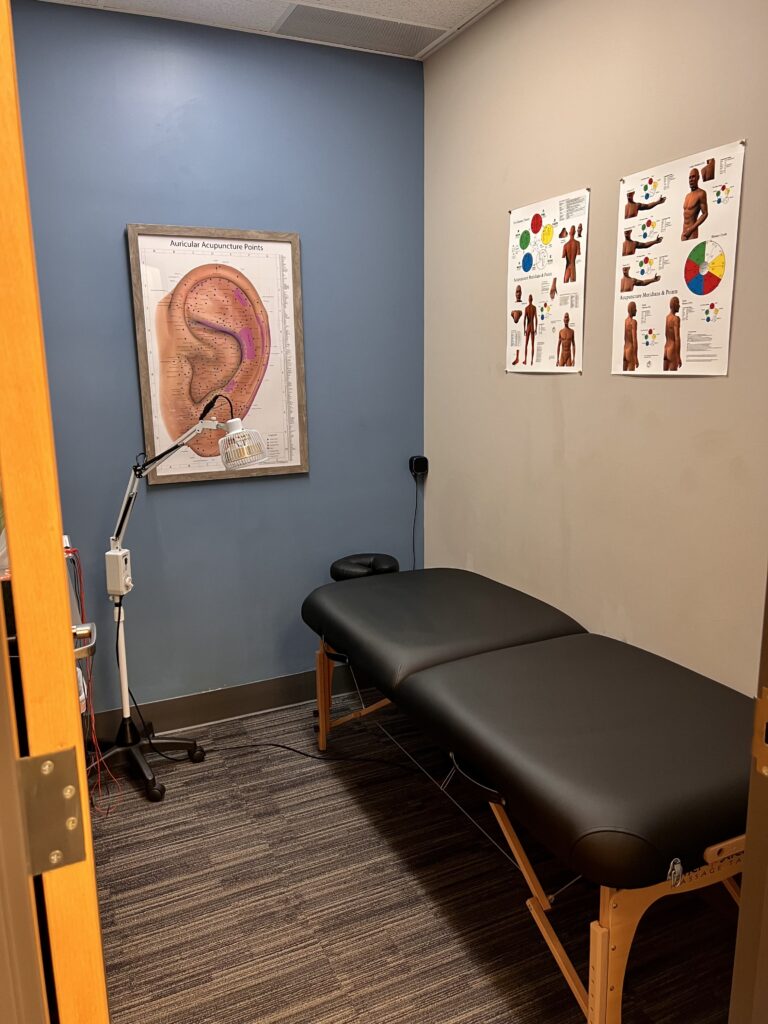
History Of Acupuncture
Acupuncture originated in 2,700-2,500 BC, over 4,500 years ago! How the practice began exactly is unknown, it is thought to have started on the battlefield. Soldiers would get pierced with arrows and other conditions/complaints would be reportedly healed. Ancient healers investigated why and compiled this information into “meridians” of treatment points that are a path throughout the outside and inside of the body. There are hieroglyphics found showing old acupuncture techniques where bones “bian” and stones were used as tools. Due to the thousands of years of acupuncture practice, there has been a lot of refinement of technique. With the invention of single-use disposable acupuncture needles, administered by a licensed professional, it is a much safer treatment today than many other methods of pain-control.
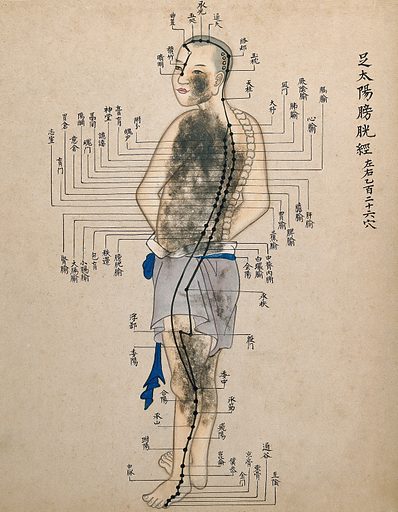
Historical Picture Archive
How Does Acupuncture “Work”?
Chinese meridian theory; it is an ancient system that helps return the balance of energy of the body to where it should be. Most people have heard of yin and yang being the concept of dualism, harmonizing of one’s life. This is the primary principle; everything is good in moderation and balance. When people start to have symptoms, there is thought to be an imbalance of energy, called a blockage or stagnation of Qi.
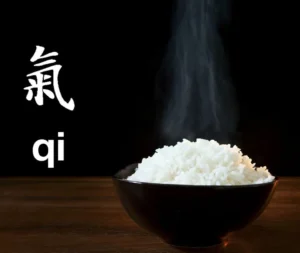
What is Qi? Qi is known by many names throughout history, some of the names include but are not limited to; the life force, innate energy, body energy, soul, and what we lose when we die. Today we call it the energy system of the body. Qi in Chinese literally means “steam rising from a container of steamed rice”. This was their way of demonstrating energy emitting from a common object.
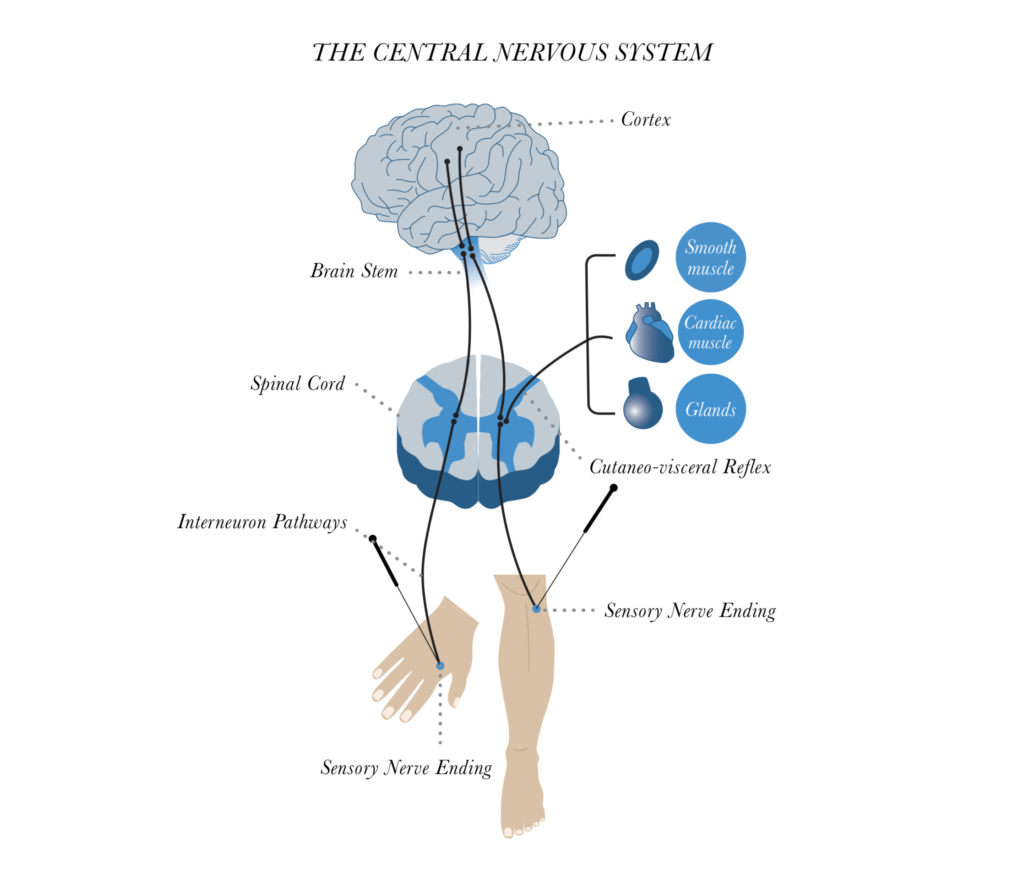
Modern Interpretations Of Acupuncture Mechanisms
Findings from basic medical research that acupuncture stimulation causes release of endorphins, serotonin, enkephalins, and γ-amino-butyric acid (GABA; a major inhibitory neurotransmitter of the brain), norepinephrine, and dopamine helped to explain the acupuncture effect on a biomedical and pharmacological basis that was acceptable to the Western medical establishment. In more recent years, we have found that the myofascial system may serve as a conduction system between meridian “points” that may even be a faster communication pathway than our nervous system!
What Does An Acupuncture Session Look Like?
Practitioners take a detailed history and examination to see how the body is “unbalanced”, then come up with a plan of action. A formula of points is derived to lead the body back to balance. There are many ways to help balance the body but the most common is through acupuncture needles. These are thin, hair-like needles that are placed into the skin at specific points proven to help balance the body. Once the areas treated are prepped using isopropyl alcohol, needles are placed quickly through a plastic tube for guidance. The needles used in our office are sterile, single-use, disposable stainless steel needles ranging from 1 inch to 3 inches. These needles are placed in the skin and retained for approximately 15 minutes. Other styles of meridian therapy include tui-na (a style of bodywork that varies techniques comparative to standard massage and chiropractic manipulation), cupping, gua-sha (scraping of the skin), herbology (nutritional supplements), and Qi gong (motion exercise). Dietary and lifestyle recommendations are often given to help reach the desired change in balance.
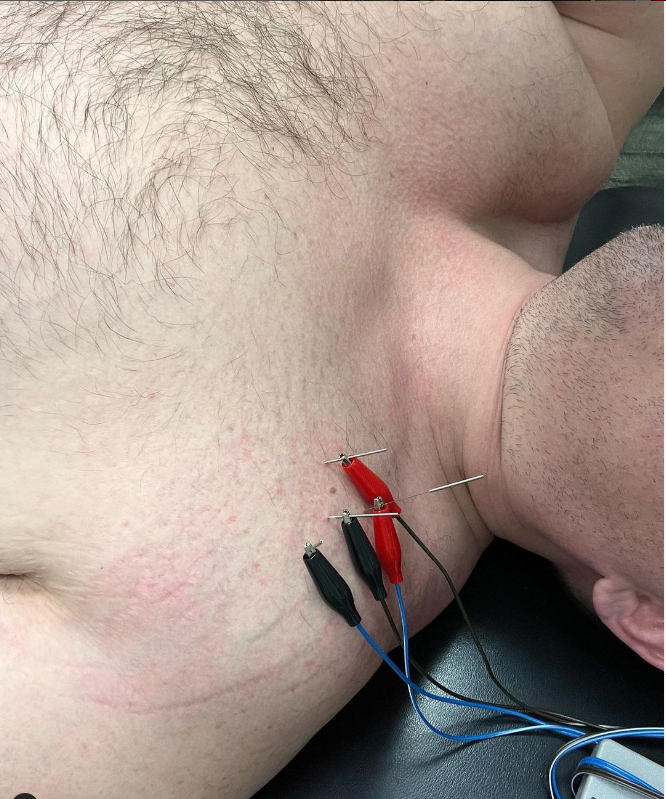
What Is Dry Needling?
The standard Western adaptation of acupuncture is to treat pain in the muscles, joints, nerves and connective tissue. These Western practitioners use acupuncture techniques to increase blood flow, modulate the inflammatory response, release your body’s natural painkillers and change the brain’s perception of the affected area. “A-shi” points are the term used to describe tender, palpable points written of in ancient acupuncture practice and were treated by acupuncturists for centuries. Janet Travell, co-author of Myofascial Pain and Dysfunction: Trigger Point Manual was a pioneer in the study and treatment of musculoskeletal pain. Dr. Travell preferred a, 1.5-in hypodermic needle for trigger point therapy and used this needle for both injection therapy and dry (without medication) needling. Dr. Travell never used an acupuncture needle. Travell had access to acupuncture needles but thought they were far too thin for trigger point therapy. Deep dry needling for treating trigger points was first introduced by Czech physician Karel Lewit in 1979. Dr. Lewit had noticed that the success of injections into trigger points in relieving pain was apparently unconnected to the analgesic used. Today the difference between dry needling and pain-based Western Acupuncture is blurry and leads to a hot debate between practitioners.
What Does A Dry Needling Session Look Like?
Practitioners take a detailed history and examination of the primary complaint. We look at the area of complaint AND other associated areas to determine the root cause. Skilled palpation of the muscles and joints is used to determine where to place the needles. Once the area is prepped, needles ranging from 1.5 to 3 inches are inserted. The needle is manipulated until a local twitch response is elicited. The needle may be stimulated using electricity to aid in generating a twitch reflex. The needles used in our office are sterile, single-use, disposable stainless steel needles. These needles after placed in the skin and retained for approximately 15 minutes. Depending on the condition of the area treated, a small (few drops) of bleeding may occur. Bruising is uncommon but may also occur. Our office strongly recommends a brief period of specific exercise immediately after to “re-train” the neuromuscular connection after dry needling for best results.
When Should I Seek Care?
Throughout professional sports—from football to baseball to tennis and track and field—a growing number of athletes are seeking acupuncture to treat injuries, musculoskeletal tenderness, inflammation, and pain.
Many patients in the United States routinely rely on acupuncture to alleviate non-sports–related health problems—including allergies, asthma, flu, depression, insomnia, irritable bowel syndrome, sciatic pain, carpal tunnel syndrome, headaches, infertility, and anxiety., and discomforts from post-cancer therapy
For upkeep and general wellness of the body it is recommended to come in at the changing of the seasons. This is the most important time believed in text throughout the ages. Traditional Chinese Acupuncture does NOT cure ailments, but instead helps the body balance and heal itself.
Our office proudly welcomes referrals from the VA Medical Center and other health professionals.
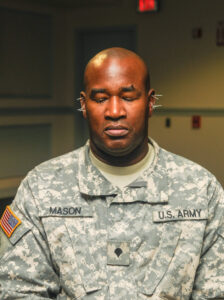
What Conditions May Be Treated With Acupuncture?
The World Health Organization has cited numerous conditions that respond well to Acupuncture that we will list below. As stated above, working with the body to help it regulate itself, Acupuncture may work for just about any symptoms or conditions we experience. Lately, as we are all living longer and wanting to maintain a youthful vigor throughout our years, acupuncture has been used in anti-aging applications. Facial acupuncture to reduce wrinkles, improve collagen and reduce inflammation is very popular currently. Acupuncture may aid in a more youthful appearance by reducing joint pain and improving flexibility as well.
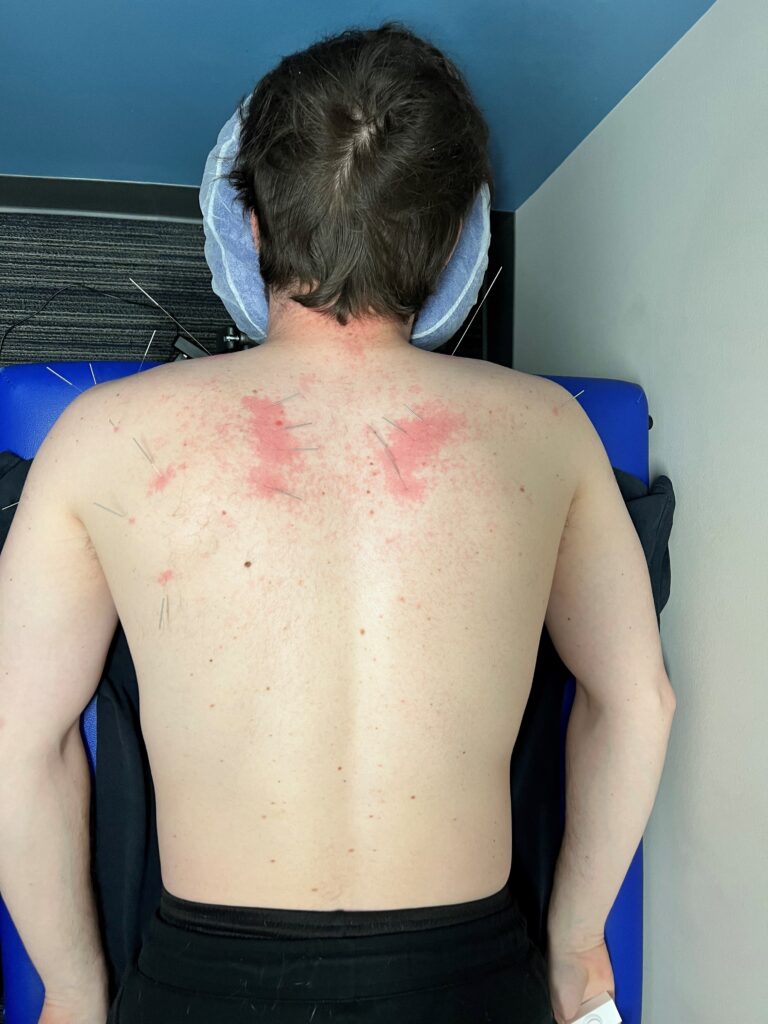
Does Insurance Cover Acupuncture?
The most well researched conditions that SOME insurances are now providing Acupuncture benefits are the following;
- Chronic (minimum 12 weeks duration) neck pain; or
- Chronic (minimum 12 weeks duration) headache; or
- Low back pain; or
- Pregnancy-related Nausea; or
- Pain from osteoarthritis of the knee or hip (adjunctive therapy); or
- Post-operative and chemotherapy-induced nausea and vomiting; or
- Post-operative dental pain; or
- Temporomandibular disorders (TMD)
** Please note that the Centers for Medicare Services chose to exclude Chiropractors from those allowed to render acupuncture to Medicare beneficiaries. Unfortunately this greatly reduces access to Acupuncture covered under Medicare.
Other Conditions Commonly Treated By Acupuncture
A big “thank-you” to Evidence Based Acupuncture for compiling the list below of numerous conditions acupuncture can treat and the quality of research evidence showing treatment efficacy.

Where Can I Go For A Session?
Our chiropractic physicians have gone through additional training here at Back on Track Chiropractic + Acupuncture and they will be able to consult you on your acupuncture needs. Going above and beyond the basic 100-hour of training required in Kansas, our doctors have over 200-hours of classroom and clinical training and have sat for a board-certification in Acupuncture. Our doctors also remain current with their continuing education in Acupuncture.
Other sources for care would be licensed acupuncturists also known as an LACCOM (L. Ac.) or in other parts of the United States, many MD’s and DO’s have added acupuncture to their practice. According to the Bureau of Labor Statistics, there are currently 7,250 acupuncturists (2021) in the United States. Many physical therapists and sports medicine providers have recently began providing dry needling for common sports injuries due to its popularity and effectiveness.
Conclusion
If you are simply looking for relief from muscle or joint pain, a licensed and trained dry needling practitioner will likely be able to provide care. These providers often look at movement in relation to your pain to determine the appropriate site of treatment. Acupuncturists not only treat muscle and joint pain but many other conditions as listed above. A chiropractor, trained in acupuncture, is in a unique position to use movement and palpation to treat tender or “trigger” points while also able to treat conditions such as insomnia, infertility, constipation, etc. Finding an experienced, licensed practitioner that follows sterile techniques in treating and disposing of needles is most important. Be sure to check the credentials of the practitioner prior to treatment.
Ready to take a stab at Acupuncture or Dry Needling for your complaint or pain? Contact Us today by e-mail or phone.
Sources:
Dunning J, Butts R, Mourad F, Young I, Flannagan S, Perreault T. Dry needling: a literature review with implications for clinical practice guidelines. Phys Ther Rev. 2014;19(4):252-265. doi:10.1179/108331913X13844245102034
Bianco G. Fascial neuromodulation: an emerging concept linking acupuncture, fasciology, osteopathy and neuroscience. Eur J Transl Myol. 2019 Aug 27;29(3):8331. doi: 10.4081/ejtm.2019.8331. PMID: 31579478; PMCID: PMC6767840.
Mayoclinic.org. 2021. Mayo Clinic-Acupuncture. [online] Available at: <https://www.mayoclinic.org/tests-procedures/acupuncture/about/pac-20392763> [Accessed 26 June 2021].
Unverzagt C, Berglund K, Thomas JJ. Dry Needling For Myofascial Trigger Point Pain: A Clinical Commentary. Int J Sports Phys Ther. 2015;10(3):402-418.
Yennie, R, Khan, P. Acupuncture Society of America Workbook
